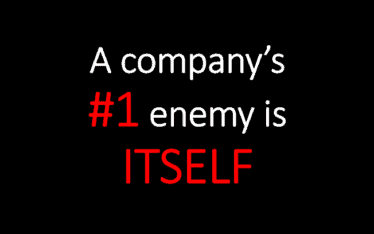Resistance to change in organizations – Employee resistance
In today’s business reality the level of complexity and the increased rate of change cause challenges for many leaders.
Motivating people to change direction, building new strategies, transforming business models, and adopting new ways of collaboration. Quite a challenge!
Change is not the problem – resistance to change is the problem
Lately I facilitated a discussion around this question “Change is not the problem – resistance to change is the problem” on LinkedIn – group “Business Improvement, Change Management and Performance”. Over 260 responses that included rich and varied perspectives and opinions on resistance to change, its meaning and importance. I include several distinctive views below, illustrated by direct quotes from the LinkedIn discussion thread:
Nick B:
Change is inevitable in business as in all areas. It can be a threat, opportunity, problem or neutral: it depends on the viewpoint.
Most people are used to change – wanted and unwanted – and manage it in their personal lives. Acceptance and resistance to change are equally normal and fit into the process which psychologists describe in the process of life changes or crises.
Resistance to change is not necessarily a problem because it is to be expected. What matters is how it is managed.
Given that change is a constant in business, leaders have to manage as best they can to achieve the required change with the minimal disruption to a wide range of stakeholders. If it’s handled badly, there will be more resistance than necessary. That is a problem, but it’s one created by the business leaders.
Linda Buitenweg:
The biggest problem is for me that usually the people driving the change don’t communicate enough about the need to change: the improvement whats needed or wanted or the burning platform. So for me change is the problem in a lot of situations. As why would we have to change? it’s all about giving people insights on the why.
Eric Bruggeman:
I think resistance to change is less of problem than you think for four reasons.
First, engagement should be ongoing and proactive to change. It begins in an easily and quick communication launch so trending success can be viewed over time.
Second, clarification is in a focus of change initiatives or construct that challenge certain growth opportunity or performance. Questions focused under these initiatives will reduce ambiguity therefore less subjectivity in response.
Third, success comes from the empowerment to ask the right or needed questions. Since change can be political the anonymity to acknowledge oneself for a comment or idea they might want to be recognized for from those questions is important. The less subjectivity in response makes actions to change much easier and quicker. The acknowledgment of contribution allows for recognition of participation and the buy in from team thus driving better change. Employees recognize action to change and realize their voice matters so they feel more part of the change and the company.
Finally the fourth success is in the completion of engagement from ownership and contribution. The commitment and accountability of both the employee to contribute to change and the managers to reengage or tweak for solutions, changes culture from a fault culture to a more innovative one.
Abhay Padgaonkar:
One of the most important aspects of behavioral research is that losses have a far great impact on people than similarly sized gains—a phenomenon that psychologists Daniel Kahneman and Amos Tversky have called “loss aversion.” Any shortcomings to the status quo are seen as losses and “losses loom a lot larger than gains.” The gains have to outweigh losses by two to four times before people find the new alternative attractive. This deeper psychological underpinning is often lost in change management efforts.
Angela Moran:
Lack of communication both upfront and ongoing just causes frustration and uncertainty amongst employees. You’d think it obvious that talking to people about change and listening to their concerns would help the situation, but I’ve experienced the opposite myself on many an occasion. If people feel a part of the changes taking place, then they are more open to the concept.
Paul Ellerton:
Resistance to change in my experience occurs during the ‘Denial to Crisis’ stages of the change curve. The extent of resistance being dependent on the degree of communication given to the individual. Senior Management at the onset of implementing change have already been through the ‘Denial to Crisis’ stages and are at least at the ‘Acceptance’ stage on the change curve. The issue is that as they implement change through their organisations those now having to take on the change start to go through the ‘Denial to Crisis’ stages. Therefore the various levels in the organisation are at different stages along the ‘Change Curve’. If this phenomenon is not understood and managed well through communication and coaching, conflict and frustration occurs between the various organisational levels and individuals. Senior Management seeing this as resistance to the change.
Anthony Harrell:
When addressing this subject, it is my belief that you also have to bring the discussion of the generations into this topic.
In today’s work environment, we currently can have up to 5 different generations in the work place (Baby Boomers, X, Y, Z, and Millenials). Is there any correlation between the different generations and this hesitance to “chance”? One could argue that the Baby Boomers are probably the most resistant than most.
Jean De Vreeze:
The key to an easy change is having strong leaders who are in the know and who can explain as to why change is necessary.
Communication as always is essential to put at ease the people who are impacted by the proposed change . If I understood the article right a leader can make change happen less painful if he can explain to his workforce what is going to happen and why the change needs to be made. That way he can reduce the anger, confusion, depression and crisis phases to a minimum, but unfortunately this requires a level of openness that sometimes is lacking.
Arnold Timmerman:
There’s only a problem if change or resistance to change is not welcomed into the dialogue. Resistance is part of the control-unknown-chaos dynamic that comes with any change. The more you want to fight or control resistance, the harder it will bounce back. Just explore the individual and systemic underlying drives for resistance; in other words, put all cards on the table. The minute we hold back because of some fear of (resistance to) change, that’s when we experience “problems”.
Stephen Harvard Davis:
One of the crucial factors for those designing change within organizations is the time factor. Yet time is the one part of the equation that is ignored, often with disastrous consequences.
All change produces winners and losers. The winners will move their time frame to the future and the losers will move further into the past. In addition each group will be seeing the change from the perception of not “Is this change good for the organization” but from the personal standpoint of “Is this good for me”.
The trick is to move as many people to the future time frame as possible, right from the start. The more people that talk about the future change in positive terms the greater the chance of success. Errors, however, revolve around poor communication, hurried change, poor planning and implementation.
Paul Adam:
Every change is different and each person’s reaction to a change is different. This is why a good change management process is critical to the success of organizational changes that occur continuously.
Jay Steven Levin:
Resistance to change is not the problem. Understanding and communication is. Inability to translate why the change is needed and frame what the benefits will be create the mask that’s being called resistance. With understanding + communication framing there is no resistance.
Eileen Strider:
I think we are kidding ourselves if we don’t recognize that change really does involve loss, at least for some. Trying to convince everyone that a specific change is good for them and therefore they shouldn’t resist is folly at best.
Short URL & title:
What is resistance to change — https://www.torbenrick.eu/t/r/cgz
Share it:
If you enjoyed this article, please take 5 seconds to share it on your social network. Thanks!









Resistance to change is a huge factor for companies wanting to drive innovation, change, and get an upper hand on their competition. Resistance comes from many variables, but the worst ones come from the individual industry “norms” or culture, tenure, management, and leadership. These are typically intertwined too.
Individual resistance to change is somewhat normal and should be expected with any new project or business initiative. Communication is critical all the way up and down the chain, but where this communication usually runs into trouble is when it is met with what I call “organized resistance to change”. This is most prevalent in medium and large companies, or companies with large or antiquated management structures.
Too often, middle level managers feel THEY call the shots in the business no matter what upper level executives want because the upper level executives do not go down to lower levels to actually see or know what is happening in their company. Instead, they rely on the reports of their directs, and the deeper the structure, the further they are away from reality of why change does not happen. But, when one gets down to the root of the problem, it comes to leadership. Leadership is NOT a job title – it is an action! Anyone in any aspect of the business can be a leader, yet that also means being at the top of the company does not mean one is a leader!
A good leader will exercise the rare ability to drive change while making it seem to those in the change process are driving the change themselves and making the appropriate decisions! This especially works in a culture mired in organizational resistance to change. Bosses and “managers” typically have no clue, as they approach change from how they can benefit.
For example, at one of my roles, I was in a middle level manager position, and made many changes to my group of 70+ people which caught the eye of upper management. They asked me to lead a Key Business Objective (KBO) for the company. The one I led was one of seven, and the teams consisted of senior and executive”leaders”. This was in an industry living in 1985 business standards in 2009. Long story short, 2009 turned out to be a down year for the industry as a whole, but this KBO was the only one successfully completed that year, and completed early.. The financial results for this Multi-Billion dollar company in this down year was a Revenue LOSS from the previous year of approximately $145.5 Million, but with a Gross Profit Gain of $100.4 Million over the previous year financials.
Since everyone on this KBO team was in a higher position than me, there was some animosity as I was asked to lead this team. Yes, there was the typical resistance to change AND the organized resistance to change. However, I was careful to NOT let the changes come from me, even though I may have had a plan of how I wanted them to make decisions. I needed to lead the team to make the right decisions based on options presented to them, and that took some creativity on my part. When things stalled (too many other priorities, etc), my executive support person was able to help me get things going, and we had great communication up and down. The right phone call to the right people can keep things on track.
The other six teams did not complete their KBOs, which was typical for the company in previous years. However, the individual members of my team got the credit for having the only successfully completed KBO, as well as contributing to corporate gains! Guess what? They KNOW they can drive change now! They KNOW change is not always bad, and they now drive innovation.
So, would anyone consider this a success story, or a failure? Obvious to me this was a success, but now, who drove the success? To me, the ones who drove the success were all these members on this KBO team! They made the decisions, not me! Maybe I helped guide them where they needed them to be, but now, with them being the ones who proved THEY could drive change, drive change at that company! Bossing and management as most commonly known drive decisions to better themselves and get them better noticed in the company – it is about themselves! BUT, leaders take a different approach. They know true change comes from leading others to be successful – especially for the long term. YEP, leadership makes a difference, and that leadership may come from any employee, supervisor, manager, or executive in any company! Keep your eyes open for those people – they will make a difference, if they are allowed to do so.